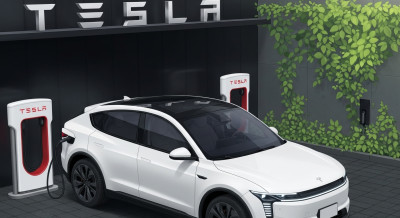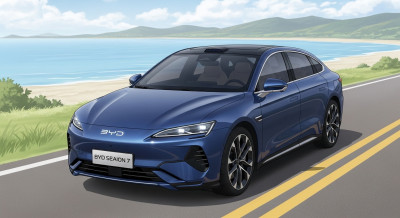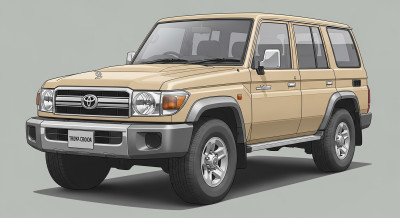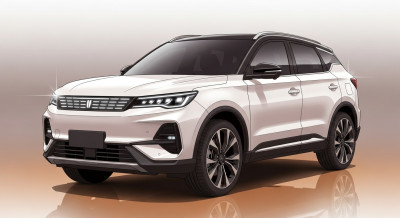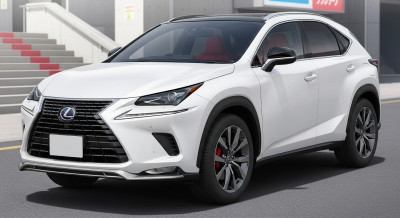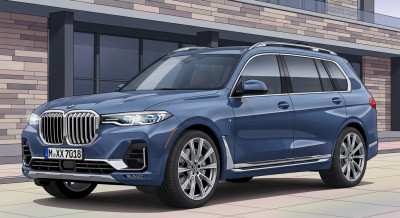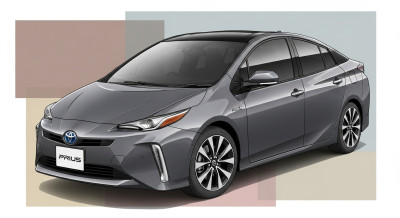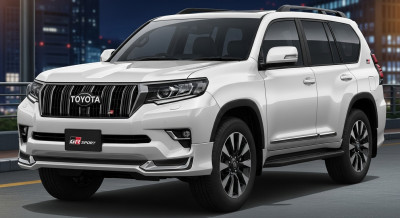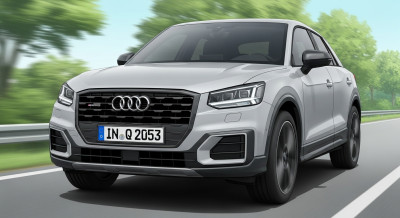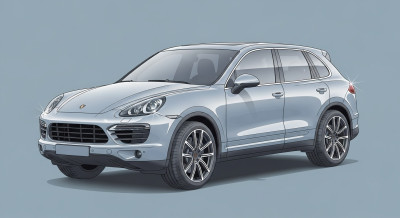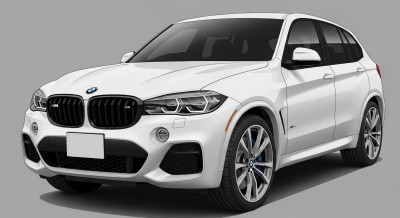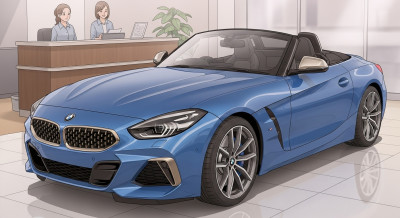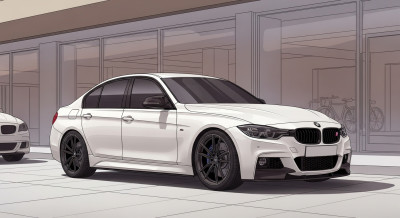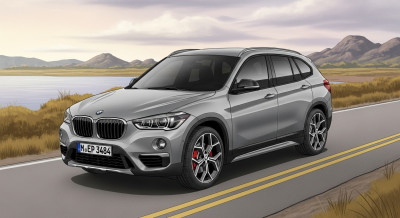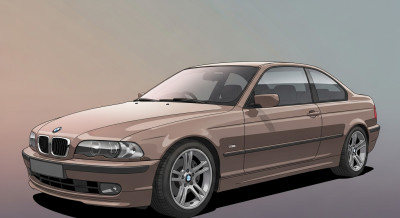2018 Aston Martin DB11 - PRODUCTION
2018 Aston Martin DB11 V-8
Eight isn't necessarily less than twelve.
The new eight-cylinder Aston Martin DB11 puts us in something of a philosophical bind, as it poses the question: How much is the right amount of too much? Does a sports car need a completely ridiculous amount of power, or will merely excessive do? With due deference to Mark Donohue’s oft-quoted assertion that superfluity would arrive only with the ability to spin all wheels in every gear, this smaller-engine version of Aston’s coupe makes an excellent case that downsizing can have an upside.
The DB11 V-8 is the first implementation of Aston Martin’s agreement with Daimler to use the Germans’ twin-turbocharged 4.0-liter V-8, the same engine that powers high-performance models in the Mercedes-AMG and Mercedes-Benz families. While the engine also will go into the upcoming replacement for the British brand’s smaller Vantage, it makes its Aston debut in the DB11. With 503 horsepower, its output is the same as in Mercedes-AMG’s C63 S, against 600 ponies for the DB11’s V-12. Both DB11 engines have near identical torque outputs, however, with the 4.0-liter’s 498 lb-ft representing a reduction of just 18 lb-ft compared with the V-12. The factory-stated zero-to-62-mph time for the V-8 of 4.0 seconds is just 0.1 second behind that of the V-12; the DB11 hit 60 mph in 3.6 seconds in our recent test of the V-12 model. Claimed top speed suffers more, falling by 13 mph to 187 mph, although we didn’t have a chance to confirm this deficit during our drive in Spain.
A key benefit of the new engine is that it’s both more compact and lighter than the twelve. The V-8 car weighs 254 pounds less than its brawnier sibling, says Aston, with most of that weight coming off the front axle.
The good news is that, until you start the V-8, nobody need know that you have stinted on the cylinder count. Only the sharpest eyes will be able to spot the differences that distinguish the V-8: dark headlamp bezels, new wheel finishes, and two air vents on the long hood instead of the V-12’s four. In every other regard it looks identical, with the same muscular design, stunning profile, and immaculately tailored cabin—the last benefiting from a Mercedes-based infotainment system.
As with the V-12 DB11, we must mourn the passing of Aston’s traditional hand brake, a fly-off lever positioned between the driver’s seat and door; now there’s just a boringly conventional, switch-controlled electric parking brake. And although gadget-loving MI6 operatives might appreciate the motorized cubby that sits between the front seats—which seems like a pretty good size for a Walther PPK—waiting for it to power open or closed is considerably less convenient than a manual slider would be.
The Sound and the Fury
Any doubts about which powerplant your Aston has shipped with are dispelled the moment the V-8 fires to life. It sounds magnificent, louder and rortier than the V-12 at startup, awakening with a brrrrap rather than the bigger engine’s creamier tone. From then onward it just gets angrier, snarling under gentle use and, when pushed further, emitting a hard-edged tone that sounds as good from the driver’s seat as it does from outside the cabin.
Performance gives away little to the V-12; indeed, the V-8 feels keener at real-world speeds. The AMG engine delivers its peak torque fractionally higher up the rev range than the V-12 does, but it makes a more dramatic entrance, arriving with a forceful shove where the bigger engine takes longer to build boost. The V-8 DB11 seems quicker to react, and throttle response is outstanding.
In AMG models, the V-8 works with either a seven- or nine-speed version of Mercedes’s G-Tronic gearbox, which use a multiplate clutch in lieu of a torque converter. But Aston has paired it with the same ZF eight-speed automatic as the V-12, with a more conventional design including a torque converter. Fears that this transmission would fail to play nice with the highly strung engine soon proved to be misplaced; the single most impressive aspect of the powertrain is how integrated the two feel. We noticed some slight throttle surging at very low speeds—the DB11 needs to be maneuvered carefully when parking—but from walking pace and beyond, the transmission delivers impressive smoothness when left in drive, and responses to manual inputs are quick enough to rival a dual-clutch gearbox.
Read More https://www.caranddriver.com/reviews/2018-aston-martin-db11-v-8-first-drive-review
Car Factory, Manufacturing, Assembly Line
"SUBSCRIBE NOW
2018 Aston Martin DB11 V-8
Eight isn't necessarily less than twelve.
The new eight-cylinder Aston Martin DB11 puts us in something of a philosophical bind, as it poses the question: How much is the right amount of too much? Does a sports car need a completely ridiculous amount of power, or will merely excessive do? With due deference to Mark Donohue’s oft-quoted assertion that superfluity would arrive only with the ability to spin all wheels in every gear, this smaller-engine version of Aston’s coupe makes an excellent case that downsizing can have an upside.
The DB11 V-8 is the first implementation of Aston Martin’s agreement with Daimler to use the Germans’ twin-turbocharged 4.0-liter V-8, the same engine that powers high-performance models in the Mercedes-AMG and Mercedes-Benz families. While the engine also will go into the upcoming replacement for the British brand’s smaller Vantage, it makes its Aston debut in the DB11. With 503 horsepower, its output is the same as in Mercedes-AMG’s C63 S, against 600 ponies for the DB11’s V-12. Both DB11 engines have near identical torque outputs, however, with the 4.0-liter’s 498 lb-ft representing a reduction of just 18 lb-ft compared with the V-12. The factory-stated zero-to-62-mph time for the V-8 of 4.0 seconds is just 0.1 second behind that of the V-12; the DB11 hit 60 mph in 3.6 seconds in our recent test of the V-12 model. Claimed top speed suffers more, falling by 13 mph to 187 mph, although we didn’t have a chance to confirm this deficit during our drive in Spain.
A key benefit of the new engine is that it’s both more compact and lighter than the twelve. The V-8 car weighs 254 pounds less than its brawnier sibling, says Aston, with most of that weight coming off the front axle.
The good news is that, until you start the V-8, nobody need know that you have stinted on the cylinder count. Only the sharpest eyes will be able to spot the differences that distinguish the V-8: dark headlamp bezels, new wheel finishes, and two air vents on the long hood instead of the V-12’s four. In every other regard it looks identical, with the same muscular design, stunning profile, and immaculately tailored cabin—the last benefiting from a Mercedes-based infotainment system.
As with the V-12 DB11, we must mourn the passing of Aston’s traditional hand brake, a fly-off lever positioned between the driver’s seat and door; now there’s just a boringly conventional, switch-controlled electric parking brake. And although gadget-loving MI6 operatives might appreciate the motorized cubby that sits between the front seats—which seems like a pretty good size for a Walther PPK—waiting for it to power open or closed is considerably less convenient than a manual slider would be.
The Sound and the Fury
Any doubts about which powerplant your Aston has shipped with are dispelled the moment the V-8 fires to life. It sounds magnificent, louder and rortier than the V-12 at startup, awakening with a brrrrap rather than the bigger engine’s creamier tone. From then onward it just gets angrier, snarling under gentle use and, when pushed further, emitting a hard-edged tone that sounds as good from the driver’s seat as it does from outside the cabin.
Performance gives away little to the V-12; indeed, the V-8 feels keener at real-world speeds. The AMG engine delivers its peak torque fractionally higher up the rev range than the V-12 does, but it makes a more dramatic entrance, arriving with a forceful shove where the bigger engine takes longer to build boost. The V-8 DB11 seems quicker to react, and throttle response is outstanding.
In AMG models, the V-8 works with either a seven- or nine-speed version of Mercedes’s G-Tronic gearbox, which use a multiplate clutch in lieu of a torque converter. But Aston has paired it with the same ZF eight-speed automatic as the V-12, with a more conventional design including a torque converter. Fears that this transmission would fail to play nice with the highly strung engine soon proved to be misplaced; the single most impressive aspect of the powertrain is how integrated the two feel. We noticed some slight throttle surging at very low speeds—the DB11 needs to be maneuvered carefully when parking—but from walking pace and beyond, the transmission delivers impressive smoothness when left in drive, and responses to manual inputs are quick enough to rival a dual-clutch gearbox.
Read More https://www.caranddriver.com/reviews/2018-aston-martin-db11-v-8-first-drive-review
Car Factory, Manufacturing, Assembly Line
"SUBSCRIBE NOW"
 LEXUS
LEXUS  AUDI
AUDI  PORSCHE
PORSCHE  ROLLS-ROYCE
ROLLS-ROYCE  LAND ROVER
LAND ROVER  FERRARI
FERRARI  MASERATI
MASERATI  CADILLAC
CADILLAC  CHRYSLER JEEP
CHRYSLER JEEP 
















